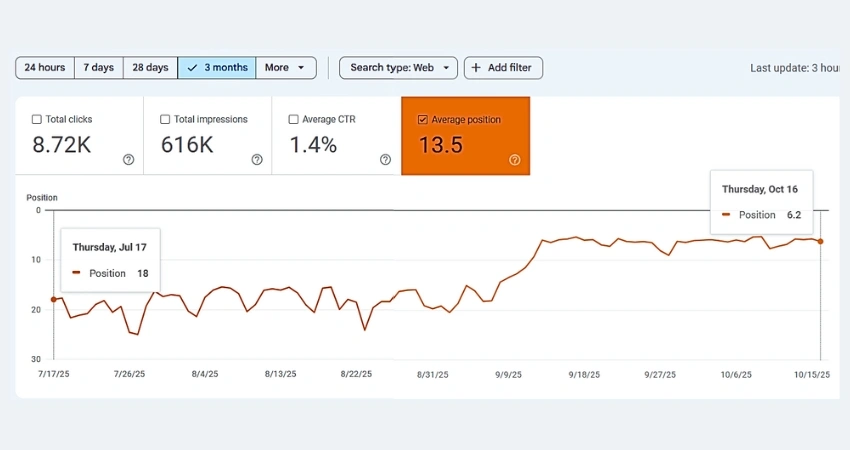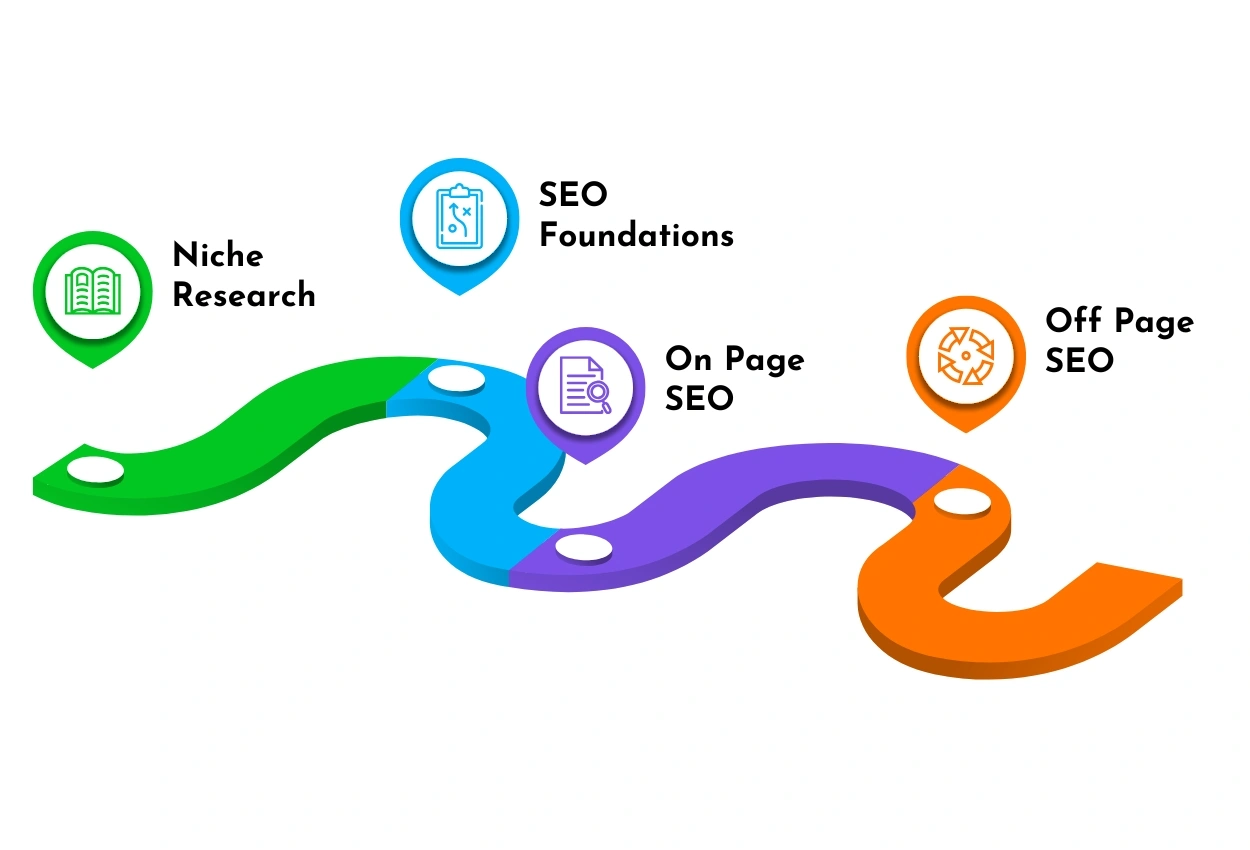Let’s talk about how most of the peoples try to appear on Google. Typically, many creators select a niche and create a website without researching existing competitors.
For example, if you want to start a blog in the health and wellness category, you might create a site named Daily Health Post or Healthy Blog. Those type of website will not rank so easily.
Those approachs is not effective for building a business or earning money because it follows exactly what everyone else is already doing. Competition is extremely high.
That is why in 2025, building a website is easier than ever but building one that actually ranks on Google and generates income is a completely different challenge.
Based on my years of experience and testing, I’ve created this complete 5 step SEO guide to help you –
- Choosing a niche that people are actually interested in
- Set up a website that works flawlessly.
- Creating content that both Google and your visitors love
- Build your reputation
- Keep growing and earning.
Whether you’re starting a blog, an affiliate site, or a business website, this guide will take you step by step from the very beginning to real success.

Build Any Website That Ranks on Google
Ready to take your website from scratch to success? Read carefully and apply the strategies that fit your needs. Each step of this guide is explained in detail on its own page, so you can follow along and implement it easily.
Navigate through the steps one by one to master how to build a website that ranks on Google and generates income:
Step 1: Choosing the Right Niche with Keyword Research
Every successful website starts with the right niche and keywords. Without this strong foundation, even the best design or marketing efforts won’t deliver results.
What You will Learn
About Top Niches
- Business/Service
- Education
- Health
Keyword Research
- High search volume
- Use long-tail keywords
- Tools to use
Brand name with Keywords
- Exact-match brand names
- Brandable names
- Low Competitive
Step 2: Website Setup & Technical SEO Basics
Once you’ve chosen your niche, the next step is setting up your website. Choosing reliable hosting and a keyword-based domain can give you an extra boost in rankings.
What You will Learn
Domain & Hosting Choice
- Keyword-rich domains
- Brandable domains
- Shared Hosting
- VPS Hosting
Website Type & Themes
- Blogs/News
- Affiliate Sites
- Business/Services
Plugins & Tools
- SEO Score and suggestions
- Speed
- Security
Technical Setup Checklist
- SSL Certificate (HTTPS)
- Mobile-First Design
Step 3: On-Page SEO – Content That Ranks
Content is the heart of your website; it’s what attracts both visitors and Google. By creating valuable, well-optimized pages with right keyword placement, you not only rank higher in search results but also build trust with your audience, turning casual readers/converts into loyal customers.
Quality content answers real questions, solves problems, and keeps visitors coming back. The more useful and engaging your content is, the stronger your brand authority becomes.
Over time, this transforms your website from just another site into a trusted resource people rely on.
What You will Learn
Content Planning
- Pillar Pages
- Topic Clusters
- Content Silos
On-Page Optimization
- Title Tags & Meta Descriptions
- Headers (H1, H2, H3)
- Internal Linking
- Reputed External Links
Content Types
- How-tos, guides, reviews.
- Product comparisons, best-of lists.
- Service pages, case studies, testimonials
Multimedia & Schema
- Optimized images, alt texts.
- Schema markup for Articles,
- FAQs,
- Breadcrumbs
Step 4: Off Page SEO & Authority Building
Google trusts authority websites, and that’s exactly where off-page SEO comes in. While on page SEO focuses on optimizing your own site, off page SEO is all about building credibility and reputation across the web.
The more high-quality signals your site receives from outside sources, the more Google sees you as a trusted authority in your niche. Strong off-page SEO not only boosts your rankings but also increases brand visibility and helps attract loyal visitors who value your expertise.
What You will Learn
Link Building Strategies
- Guest Posts
- HARO
- Broken Link Building
- Niche Edits
Brand Signals
- Social media profiles
- Repurpose blogs into
- Quora answers,
- Medium stories.
E-E-A-T
- Write with real expertise.
- Add author bios.
- Share testimonials
- Post Results
This includes earning backlinks from trusted websites, getting mentioned in relevant communities, and maintaining an active presence on social platforms.
Step 5: Growth, Monitoring & Long-Term Branding
Is site speed critical? Search engines expect your pages to load in under a second. Clean and well-structured source code also plays a big role. This is where technical SEO comes in, ensuring Google can properly crawl, index, and rank your site.
SEO is not a one time job, it’s an ongoing process. Google keep updates there algorithm for making search easier. To keep your website growing, start by tracking performance using Google Analytics for traffic insights and Google Search Console to monitor rankings and indexing.
Address any SEO issues, such as enhancing Core Web Vitals, resolving indexing issues, and eliminating duplicate content. Refresh your old content with updated statistics. Republishing can help boost rankings without creating new posts.
As your site grows, scale your efforts through ads (like Google AdSense or Ezoic), affiliate programs (Amazon, SaaS tools), or lead generation for services. Finally, focus on long-term branding by building authority and cultivating a loyal community through newsletters, Facebook groups, or LinkedIn.
Monetization Methods
You can earn through 30+ monetization methods across 450+ categories (according to Google Gemini and ChatGPT). However, many of these niches are highly competitive, ranking on them as a new site can feel like a turtle trying to outrun a horse in a race.
Conclusion
Remember, SEO is a long term game. Every step you take, from keyword research to authority building and content refresh, compounds over time, transforming your website from just another site into a trusted resource that people rely on.
Whether you’re starting a blog, an affiliate site, or a business website, applying these steps consistently will help you not only rank higher but also convert visitors into loyal customers and grow your online presence.
